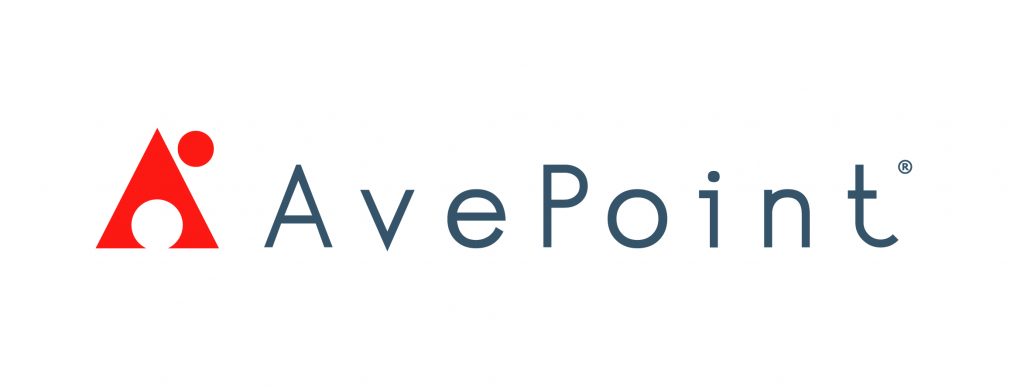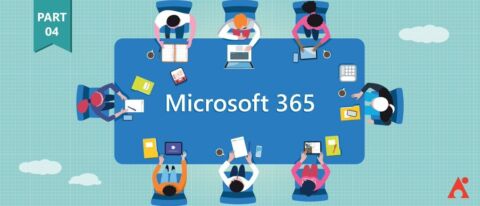Want to optimize collaboration within your Microsoft Teams environment? Check out our free “Everyday Etiquette in Microsoft Teams” guide today!
The “My Teams” series is broken into the following categories. Click on one to see the full list of articles in that category:
- The AvePoint Microsoft Teams Story
- Microsoft Teams Case Studies
–Why This Office 365 Consultant Insists on Using Microsoft Teams
–What Government Agencies NEED to Know Before Running a Microsoft Teams Pilot
–4 Vital Microsoft Teams Adoption Questions Answered In-Depth - Microsoft Teams Features and Functions
Sarah is the AvePoint Public Sector Marketing Manager, in charge of everything from coordinating the collaboration of customer-facing collateral to scheduling and facilitating webinars, events, and conferences. Beyond her experience interacting with the Public Sector team in Microsoft Teams, Sarah has used Microsoft Teams to coordinate 50+ people at our firm’s largest marketing event, Microsoft Ignite, two years in a row. In part four of this series, we’ll talk with her to see how Marketing has taken advantage of the tool and what it was like to be on the outside of the APS roll out.

Name: Sarah Zalesiak
Location: Richmond, VA
Current Role: Marketing Manager
One word that best describes how you work: Multitasker
Mobile device of choice: iPhone
Computer of Choice: Lenovo ThinkPad
To get started, please tell us a little about your background and how you got to where you are today.
I’ve been with AvePoint as a part of the field marketing team for two years now. Before AvePoint, I actually did fundraising at a local nonprofit for several years.
What is your engagement with the rollout of Microsoft Teams for Marketing and across the whole of AvePoint?
Marketing was one of the earlier adopters of Microsoft Teams, and we currently use the platform exclusively for all collaboration. We use different channels within the “Marketing Team” to push out announcements/updates or ask questions that impact different groups of people within our department. We’re also really active within the Teams for other departments. We have a channel set up within the “Team” for each of our sales teams (we use these to share information and collaborate with different groups).
How has Microsoft Teams changed how you engage across the marketing department?
We used to send tons of emails back and forth with lots of people on cc. We also leveraged Skype for Business to chat, but having so many different communication threads floating around made project-based collaboration tricky to follow. Teams has completely changed the game for us.
We structure the channels within a Team around different projects. If the project is relevant to you, you can “follow” the channel to stay up-to-date on all communication. Even if you aren’t following a channel but you’re part of the larger team, you still can check in from time to time to see how things are going. The transparency here is really nice.
Looking for examples of how Teams can be useful for a marketing department? Check out this interview: Click To Tweet
What do you do in Teams that you can’t imagine going back to doing “the old way?”
Everything ? One thing we’ve been able to streamline considerably using teams are requests for email sends. We have a channel reserved just for these. If I need a second set of eyes on something before sending, I’ll pop a link to the program in the channel, tag a handful of people, and whoever has the bandwidth to take the request will shoot a note back letting everyone know a review is in process.
If they spot any discrepancies or want to loop in a third person for review, they’ll respond right in the thread. I “follow” this channel so I get notified when a request comes in, even if I’m not tagged in it. We have seven people in North America who work on marketing emails, so it’s nice to be able to keep tabs on everything that’s going on.
Why did you choose to use Microsoft Teams as a tool-of-choice at Ignite 2018?
Before rolling out Microsoft Teams, we used a handful of different platforms for big conferences like Ignite. All pre-show planning was done via email with lots of conversations in Skype for Business. We used text, email, and WhatsApp to communicate on-site. I would email myself pictures of business cards or send myself email reminders around conversations with leads. Contracts and planning documents were all stored in SharePoint, something that made it tricky to pull up quickly on-site if a question came up. Now, we simply spin up a Team for the conference that houses all pre-, current and post-event communication. For more on using Microsoft Teams at Ignite, give our Director of Product Strategy Paul Olenick’s post from last year a read.

What does a typical event Team look like in Microsoft Teams?
Different groups of people are involved in different parts of the process, so we leverage channels to make sure the right audience is getting the right message. We’ll typically use one channel for all pre-show planning. We have another that our SME team uses to track meetings and ensure we have coverage as needed. Marketing uses their own channel to communicate on-site around blog posts and social updates.
We encourage our on-site team to follow the “General” channel, a space reserved for things that impact everyone involved like announcements, logistical info around hotels, shuttle schedules, etc. Everyone is asked to download the Microsoft Teams app ahead of the show so they can stay up-to-date with important notifications and quickly access files, meeting notes, etc. when on the go.
What’s your best time-saving shortcut in Microsoft Teams?
The ability to link directly to a thread is really nice.
Blog Post: Exploring Microsoft Teams in APAC! Dux’s Governance Tips and Workshop Recap
What are the best features of Microsoft Teams that you miss when you’re working with departments that have not adopted the tool?
This might be a toss-up between perpetual chat and the ability to copy and paste images directly into a chat or Teams thread.
Fill in the blank: I’d love to see ____ answer the same questions.
Our Community Champions.
What’s one thing would you recommend to someone working with another department who has rolled out Microsoft Teams?
Be selective with your tagging! Make sure you’re only tagging individual people or groups of people who the information is relevant to. If you over-tag, people may start tuning out.
Want to be notified when a new series entry goes live? If so, subscribe to our blog!

